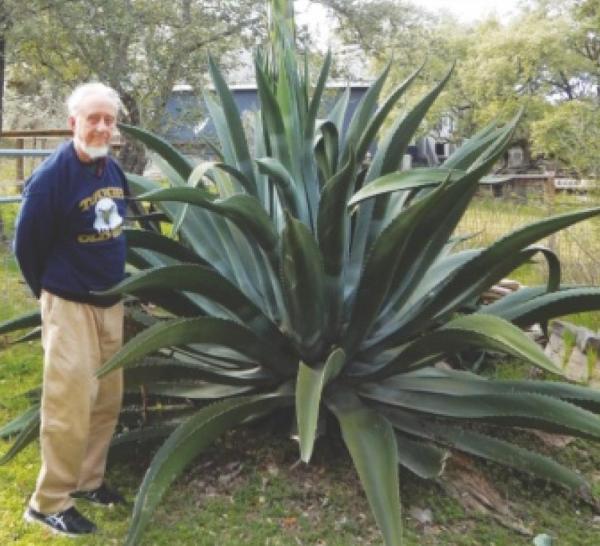Agave
Many Agaves are native to Hill Country. When I moved into my house in 2002 there were Agaves already located here. The deer do not eat them, but when they shed the velvet on their antlers they use the Agaves to help this process. The Agaves look terrible after the deer use their sharp edges to assist in removing the velvet from their antlers.
I have found that the Agaves planted under Escarpment Oaks (with low slanting limbs) are spared the destruction experienced by the Agaves planted out in the open. The low branches make it difficult for the deer to position themselves to rub against the Agaves.
Agaves can get huge and they have sharp tips. I have to cut off the ends of leaves that extend into the area where I mow. After a bad experience with those sharp ends I learned my lesson.
Once established they require no watering. Mine are grown in the semi shade.
I like the appearance of the long graceful leaves. You need to have plenty of space to grow Agave Americana and they are not suitable for yards with young children or near walkways due to their sharp ends.
I have some Agaves inside my fence. They get huge. Side pups appear regularly and thus I have many young plants to give away. This year I have an amazing surprise. A flower spike over 15 feet tall shot up out of the middle of the plant. Some Agaves are called Century Plants because it takes so long for them to bloom. They are said to die after they bloom. We shall see.
During this period of social distancing my yard has experienced more than usual attention from me. I am grateful for a relaxing activity that is not discouraged. I hope you too can find peace in the garden.
Written by Jackie Mattice, Hays County Master Naturalist


